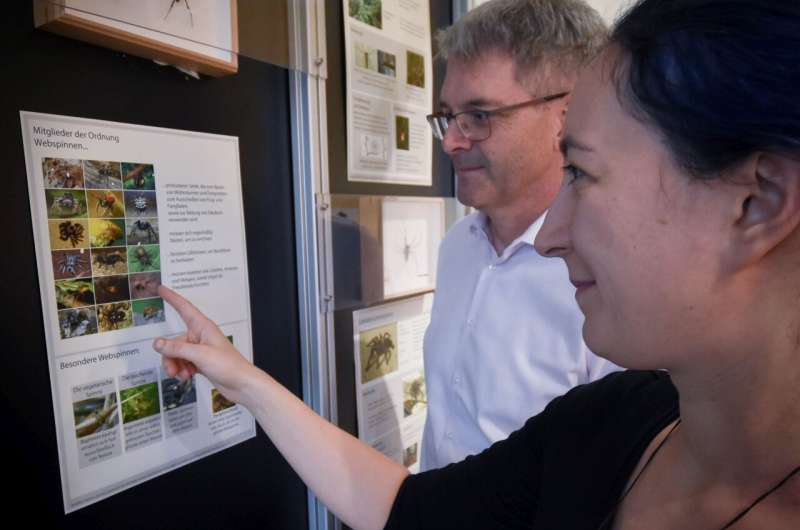Study finds spider silk is more robust in areas with heavy rainfall

Whether spider silk is stronger and tougher depends on the environmental influences to which it is exposed. Researchers have conducted a study in which they show that spider webs are particularly robust in areas of heavy rainfall.
The results of the study of 50 spider species are now in the journal Current Biology under the title "Impact of environmental factors on spider silk properties."
In the course of evolution, spiders have developed "orb webs" to catch their prey. The radii of these orb webs are particularly important as they absorb the energy of prey collisions. These so-called major ampullate silks, also known as dragline silk, are tougher than most natural and man-made fiber materials.
In the latest study by Prof Dr. Thomas Scheibel, Chair of Biomaterials at the University of Bayreuth, silk from 50 spider species in Colombia was examined and compared. The aim was to understand how the environment affects the mechanical properties of the silk.
"It was the first study on spider silks to analyze entire area-wide environmental factors along climatic and altitudinal gradients," explains Scheibel. "The results show that spiders in regions with a lot of heavy rainfall have stronger silk threads than spiders that live in regions in which heavy rain events are less frequent."
This means that spider silk from regions with strong rainfall can also absorb more energy. This applies not only between different spider species, but also within the same species. "It is likely that the mechanical properties of the silk have been optimized in areas with heavy rainfall in order to minimize damage to the webs and the associated energetic loss for the spider," says Scheibel. This knowledge allows material scientists to direct their search for new exceptional silks more effectively.
More information: Charlotte Hopfe et al, Impact of environmental factors on spider silk properties, Current Biology (2023).
Journal information: Current Biology
Provided by Bayreuth University



















